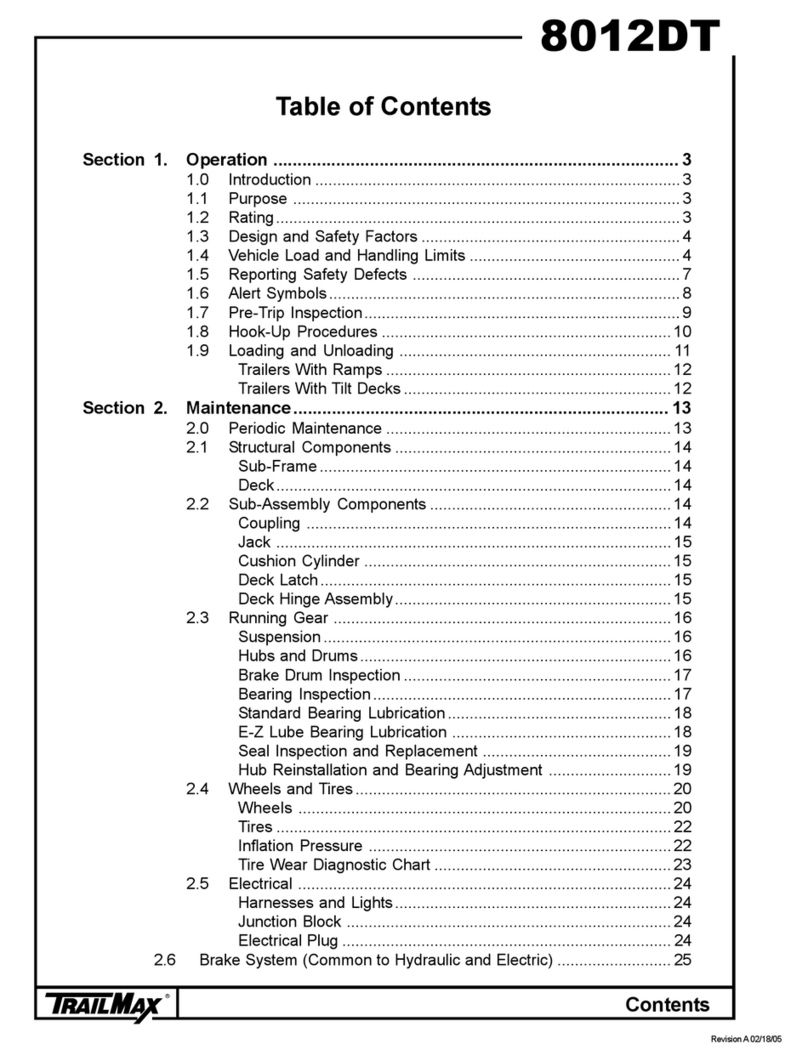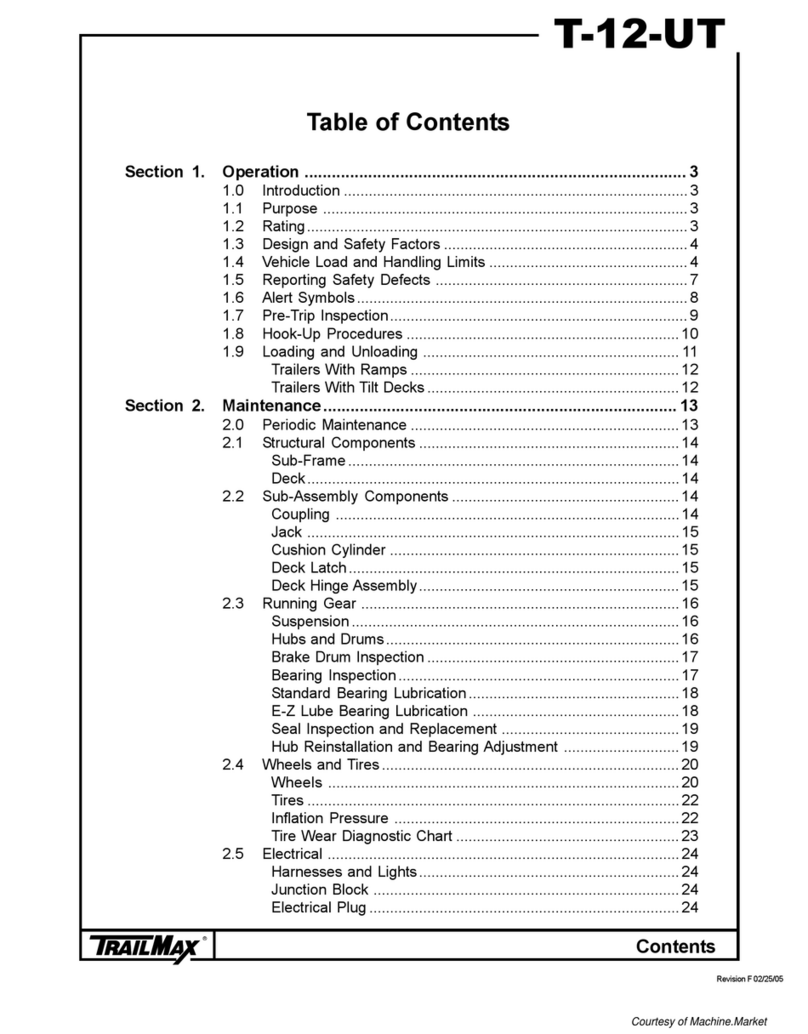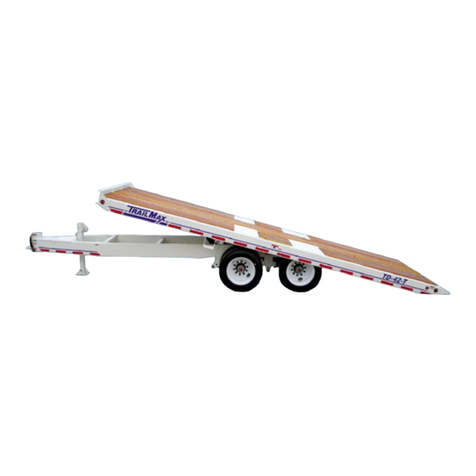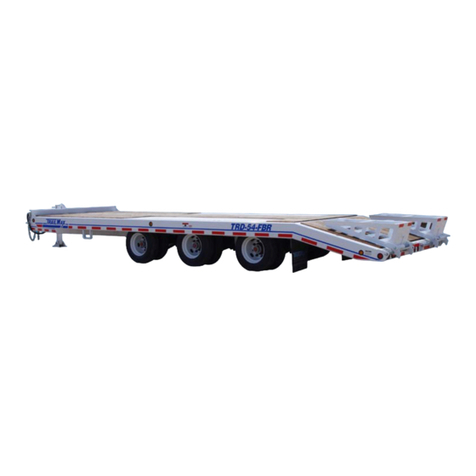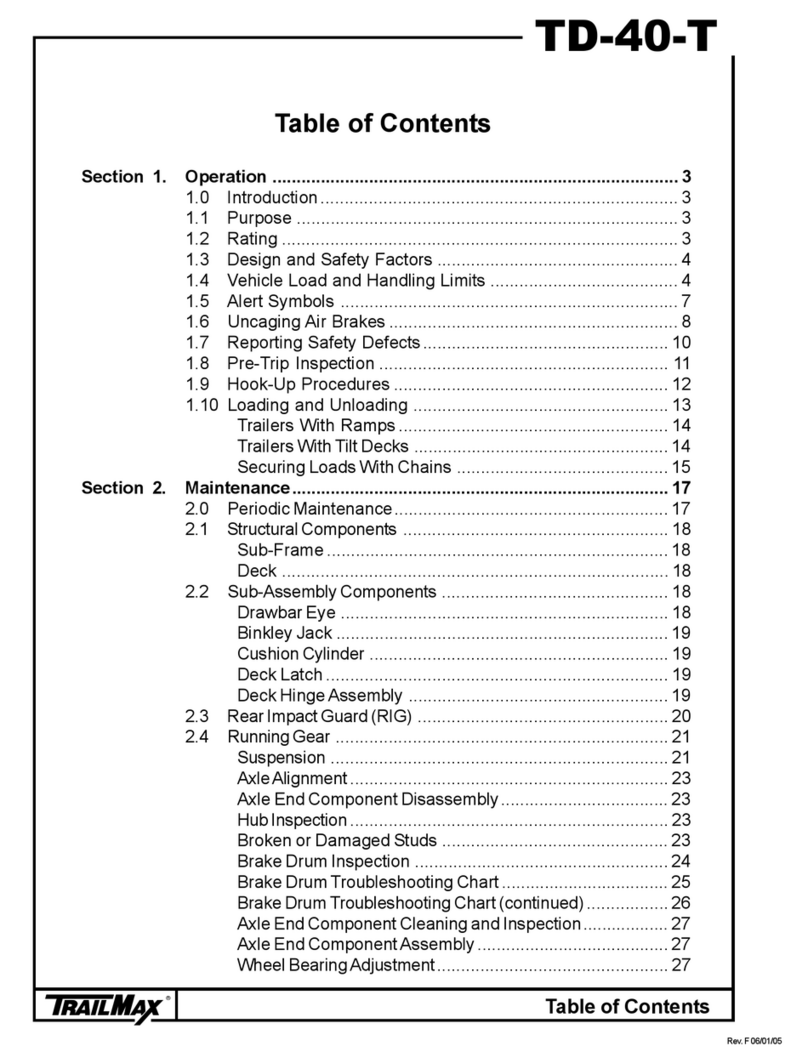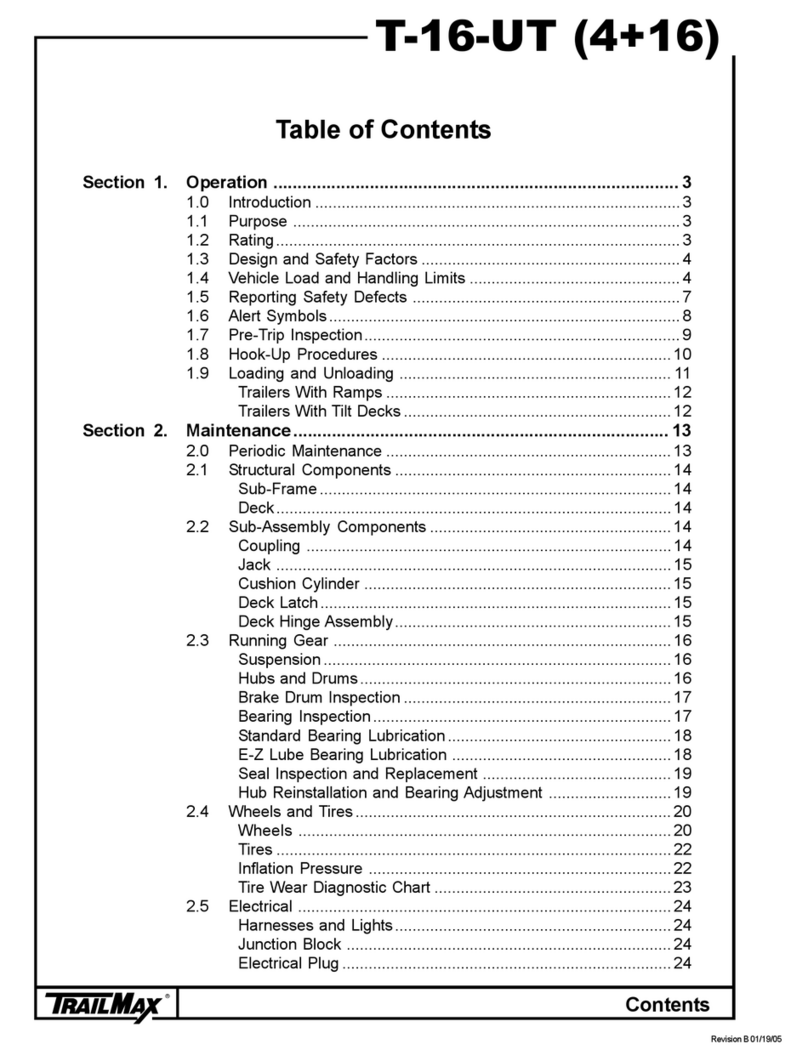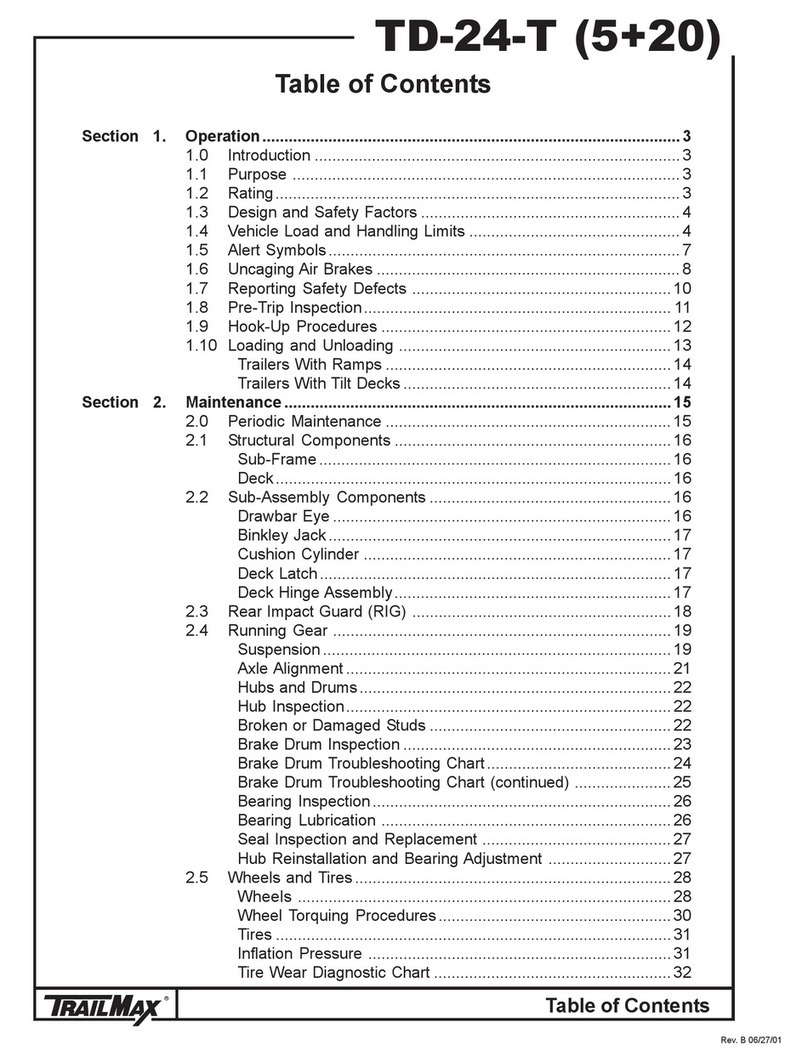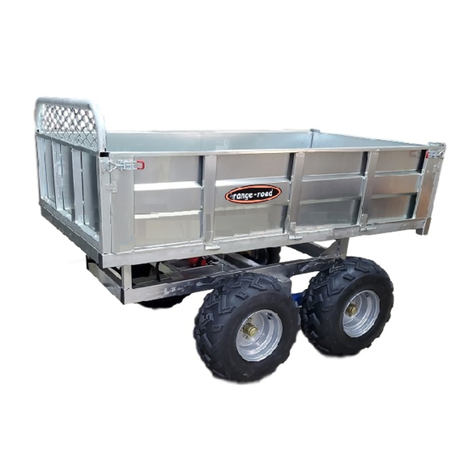
®
page 2
S-5-UT
2.6 Brake System (Common to Hydraulic and Electric) ................... 25
Brake Adjustment ..................................................................... 25
Brake Cleaning and Inspection ................................................ 26
Brake Lubrication ..................................................................... 26
2.7 Hydraulic Brake System ............................................................. 27
Operation .................................................................................. 27
Surge Actuator Maintenance .................................................... 27
Corrosive Environment Warning .............................................. 28
Hydraulic Lines ......................................................................... 28
Hydraulic Brakes ...................................................................... 28
Brake System Bleeding ............................................................ 29
Hydraulic Brake System Troubleshooting Chart ...................... 31
2.8 Electric Brake System................................................................. 31
Operation .................................................................................. 31
Using your Brakes Properly...................................................... 32
Synchronization ........................................................................ 33
Controllers ................................................................................ 33
Magnets .................................................................................... 34
Electric Brake System Troubleshooting ................................... 35
Measuring Voltage .................................................................... 35
Measuring Amperage ............................................................... 37
Electric Brake System Troubleshooting Chart ......................... 38
2.9 Pre-Storage Maintenance ........................................................... 40
2.10 Pre-Season Maintenance ........................................................... 41
Section 3. Parts .......................................................................................... 42
3.1 Structural Components ............................................................... 42
Deck Surface ............................................................................ 44
3.2 Sub-Assembly Components ....................................................... 45
Hammerblow Jack TWS 151 DS .............................................. 45
Couplers ................................................................................... 46
Cushion Cylinder ...................................................................... 48
Deck Latch Assembly ............................................................... 49
3.3 Running Gear ............................................................................. 50
Hydraulic Brake Components................................................... 52
Electric Brake Components, 5K ............................................... 54
Axle End Components.............................................................. 56
3.4 Wheels and Tires ........................................................................ 57
3.5 Electrical ..................................................................................... 58
Harnesses and Lights............................................................... 58
Electrical Plug ........................................................................... 60
Electric Brake Wiring ................................................................ 61
Electric Breakaway System ...................................................... 61
3.6 Hydraulic System ........................................................................ 62
Hydraulic Lines ......................................................................... 62
Model 91 Surge Actuator .......................................................... 64
Section 4. Warranty Claim Procedure ....................................................... 66
Contents
